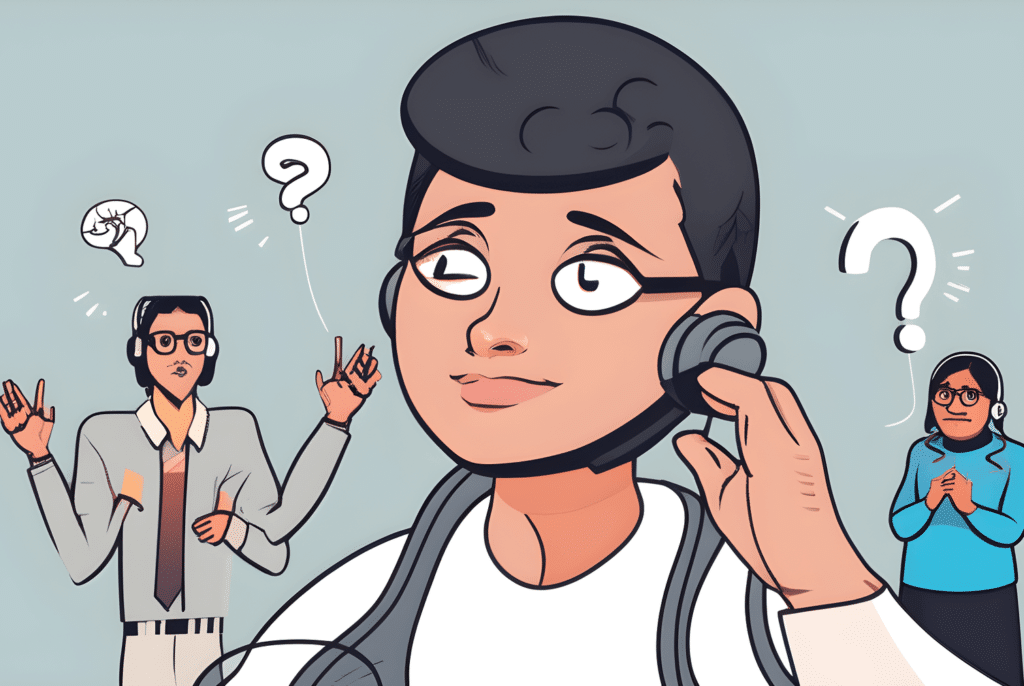In professional settings, clear and effective communication is key to building strong relationships and maintaining productivity. One phrase you may often hear in business communication is “I will let you know.” While this statement is polite and can indicate that someone is considering your request, it can also leave you wondering what to do next. Should you follow up? How long should you wait before asking for an update? And how can you respond to ensure that the conversation remains professional and respectful?
In this blog post, we will explore how to respond to “I will let you know” professionally. We’ll provide clear strategies for how to handle this statement depending on the context, as well as tips on how to keep the communication process moving smoothly.
Why “I Will Let You Know” is Common in Professional Communication
Before delving into how to respond, it’s helpful to understand why “I will let you know” is so commonly used in the workplace. Here are some reasons:
- Pending Decision
- The person may need to gather more information or consult with others before making a final decision.
- Uncertainty
- They might not yet have a clear answer and are giving themselves time to think things through.
- Polite Response
- It’s a polite way of saying that they cannot provide an answer at the moment, but they’ll keep you updated when they have more clarity.
- Delegation of Responsibility
- Sometimes, the person is deferring the decision or responsibility to someone else or another team.
- Avoiding Commitment
- Occasionally, “I will let you know” is used when the person isn’t ready to commit to a particular course of action, whether it’s because they are unsure or the decision is complex.
How to Respond to “I Will Let You Know” Professionally
It’s important to remain respectful, patient, and clear in your response when you hear “I will let you know.” The goal is to acknowledge the statement without pushing too hard, while still keeping the conversation productive. Here are different approaches depending on the context of the situation:
1. Acknowledging the Response and Expressing Appreciation
If you’re requesting something or asking for information, the best approach is often to simply acknowledge their response and thank them for their time. This keeps the communication positive.
- Response 1: “Thank you for considering this. I look forward to hearing from you.”
- Response 2: “I appreciate you taking the time to think this through. Please let me know if you need anything further from me.”
- Response 3: “I understand, and I appreciate your attention to this matter. I’ll wait for your update.”
- Response 4: “Thanks for the update! I look forward to your response when you have more information.”
- Response 5: “That sounds great, thank you. I’ll be ready to follow up if needed.”
By acknowledging their response and showing gratitude, you maintain a positive tone without pushing for immediate answers.
2. Offering Additional Information (If Needed)
If you feel that additional information might help clarify your request or make it easier for them to make a decision, this is a good opportunity to offer that.
- Response 1: “If it helps, I’d be happy to provide any additional details or context to assist in making a decision.”
- Response 2: “Please let me know if you need any further data or if there’s anything I can clarify for you.”
- Response 3: “I’m happy to provide any further information that might be helpful. Just let me know.”
- Response 4: “If there’s anything else you need from me to move this forward, feel free to ask.”
- Response 5: “I can provide more insights if that would help your decision-making process. Just let me know how I can assist.”
By offering additional assistance, you demonstrate your willingness to collaborate and be helpful without pressuring the other person.
3. Asking for a Timeline
In many situations, it’s appropriate to ask for a rough timeline or to request a follow-up. However, it’s important to do this professionally and respectfully.
- Response 1: “I understand that you’re still reviewing things. Could you provide an estimate on when I might expect to hear back?”
- Response 2: “I completely understand. Would it be possible to get a rough idea of when you might have an answer?”
- Response 3: “Thanks for letting me know. Is there a specific time frame I should be aware of for follow-up?”
- Response 4: “I appreciate that. Could you give me a sense of when would be a good time to check back in?”
- Response 5: “Understood. Is there a deadline or timeframe I should keep in mind for your response?”
Asking for a timeline ensures that both you and the other person are on the same page about when to expect the next steps.
4. Following Up After Some Time
If you haven’t heard back after the expected timeframe or there has been a delay, it’s appropriate to send a follow-up email. A gentle reminder shows professionalism and initiative.
- Response 1: “I hope you’re doing well. I wanted to follow up on my previous request. Please let me know if you need any additional information from my side.”
- Response 2: “I just wanted to touch base regarding the update we discussed. Do you have any further information for me?”
- Response 3: “I understand you’ve had a lot on your plate. I wanted to check in and see if there have been any updates on my request.”
- Response 4: “I’m following up to see if you’ve had a chance to review my request. I’d appreciate an update when possible.”
- Response 5: “I hope everything is going well on your end. I just wanted to check in and see if you have any updates regarding the matter we discussed.”
These responses are polite and maintain professionalism while encouraging the other person to provide an update.
5. Responding to “I Will Let You Know” When You Need an Immediate Answer
If the situation requires a more immediate answer or if there’s a deadline, you may need to politely emphasize the urgency without sounding demanding. Here’s how to approach it:
- Response 1: “I understand, and I appreciate you considering this. However, I wanted to let you know that we have a deadline on [date]. Would it be possible to receive an update before then?”
- Response 2: “Thanks for your response. Given the urgency of this matter, it would be really helpful to know if you could provide an answer by [date].”
- Response 3: “I understand you need some time. However, I wanted to inform you that we’re working towards a tight timeline, and a response by [date] would be greatly appreciated.”
- Response 4: “I completely understand your need to think this through. Could you kindly let me know your decision by [date] due to our project’s timeline?”
- Response 5: “I appreciate that you’re considering this. Given the circumstances, could you let me know by [date] if possible?”
These responses emphasize urgency without being pushy. It’s always important to respect the other person’s time, but if deadlines are at stake, it’s appropriate to mention them in a respectful way.
6. Responding When You Don’t Agree with “I Will Let You Know”
Sometimes, you may feel that a more immediate answer is necessary or that you need more specific feedback. In such cases, a more direct response can be appropriate, as long as you remain polite.
- Response 1: “I appreciate your consideration. However, could we perhaps schedule a quick meeting to finalize this decision sooner?”
- Response 2: “Thanks for letting me know. I’d like to suggest that we set a concrete date to make a final decision so that we can move forward efficiently.”
- Response 3: “I understand you may need more time, but I was hoping to have a decision sooner. Is there anything I can do to help expedite the process?”
- Response 4: “I understand that this requires careful thought. Could we revisit this in the next 24 hours to ensure that we meet our deadlines?”
- Response 5: “I understand your position. Would it be possible to set a specific follow-up date so we can plan accordingly?”
These responses convey your need for a prompt decision while maintaining respect for the other person’s process.
Table: Dos and Don’ts When Responding to “I Will Let You Know”
| Dos | Don’ts |
|---|---|
| Express gratitude and understanding | Sound impatient or demanding |
| Politely request a timeline or follow-up | Ignore the other person’s response time |
| Offer additional assistance if needed | Overwhelm the person with excessive details |
| Be professional and respectful in your tone | Be overly casual or informal if the context is professional |
| Follow up within a reasonable timeframe | Follow up too aggressively or too soon |
Final Thoughts
Responding to “I will let you know” professionally is an important skill to have in the workplace. Whether you’re waiting for a decision, an update, or further instructions, your response should be courteous, respectful, and clear. By following the strategies outlined in this post—acknowledging their response, offering



